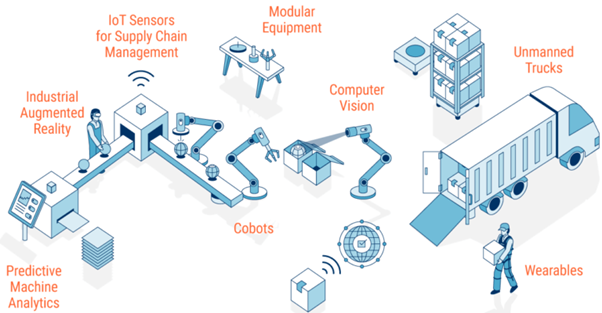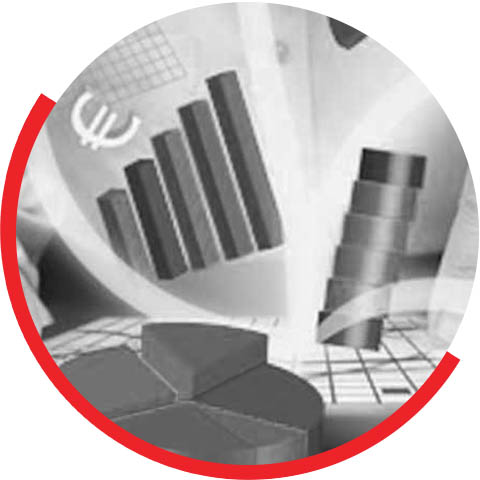The digitally born businesses have been successful in rapid disruption and value creation, through platforms. This is because the platform-based business models enhance the ecosystem, facilitate value exchanges between different stakeholders in the ecosystem while supporting massive amounts of data. In short, platforms enable data-driven decision-making.
In the earlier article, the importance of data for asset management is elaborated in detail. In this article, the focus is on the scope of smart management and its application in the Asset Intensive Industry.
Smart Assets & Equipment: Unlocking present-day business puzzles
Today, the majority of business firms are relying more on technology, smart assets, and equipment which are a must to provide the best service to their customers.
Presently growing businesses are taking care of assets to increase their business performance, to optimize total cost and sustainability that focuses on energy efficiency. Businesses are driven by the future changing technology and equipment, to come out successful in the market.
However, sustainability can be achieved through smart assets and their maintenance, to meet the demands of the Industry. IT service providers are therefore trying to solve the modern business puzzle. Smart tools for monitoring energy consumption in production sites to streamline the replacement of defective equipment and process control decisions and even behavioural change. The result is to eliminate performance, downtime, traditional asset management functions, or outdated equipment and improve regulatory compliance from lower carbon emissions.
Reasons to start embracing smart assets
Realigning asset groups: To facilitate performance analysis, asset groups should incorporate assets with similar characteristics such as life cycles and maintenance activities. So, for example, electromechanical assets, such as the capacitor bank, should be separated from electronic assets, such as the capacitor bank’s electronic controller, as they have different asset lives. Source
Realigning depreciation rates: Realigning depreciation rates will enable organizations to adequately account for variable life spans in the realigned asset groups.
Creating a centralized Asset health center: Defining the physical, operational, and maintenance history data is necessary to create an overall view of each asset’s health, condition, and performance. Utilities that take an integrated asset health approach will have a foundation for plugging multiple new smart grid assets into the organization more easily.
Holistic asset data strategy: The Holistic data strategy drives multiple data sources across new as well as legacy systems. Also, the right analytical and business intelligence tools to facilitate asset cost, risk, and performance analysis must be adopted.
Developing a proactive asset strategy process: The strategy for new electronic asset groups should include proactive maintenance, upgrading, and replacement.
Pre-emptive Analytics: Driving force in smart maintenance
Pre-emptive analytics better known as Prescriptive analytics examines data structure and provides the best possible ways of solutions to make a specific outcome happen across different scenarios.
Predictive analytics keeps decision-makers informed about multiple decision choices with their anticipated impact on specific key performance indicators, whereas prescriptive analytics can provide an insightful path to a certain particular outcome.
Predictive analytics – Foundation for an Analytical approach
The Business intelligence tools have built-in prescriptive analytics to provide organizations with actionable insights that empower them to make effective decisions. One interesting application of prescriptive analytics is in the Energy and Utility business management, where prices are constantly fluctuating based on ever-changing political, environmental, and demand conditions.
Asset efficiency and its effective management are the most common challenges faced by Utility firms. Predictive analytic techniques can effectively forecast the asset efficiencies for future periods with the help of advanced forecasting techniques. The asset efficiencies can be accurately predicted based on the smart metering data that is coming in which are already covered in the fields.
The efficiency of the operational network and assets get reversely impacted. Predictive analytics can devise statistical models that can consider these errors in base data inputs to some extent.
Some of the key benefits of Smart asset and predictive analytics are:
- Smart device measurements are often analyzed in real-time to reduce the utilization gaps for critical assets
- Causes of asset failures are analyzed in real-time and failure is predicted before they occur
- Better adherence to the key reliability indices due to fewer customer interruptions and lower asset downtimes
- Improved asset availability due to the actions taken in real-time. e.g. Real-time flow adjustments in the network to control the overload in a transformer to improve its availability
- Variance in asset risks is predicted in advance through forecasting techniques that help in better asset investment planning
- Real-time data analytics helps in improving asset efficiencies
Prescriptive Analytics - Effective Analytics practice:
Prescriptive analytics is a type of data analytics, the technology which supports businesses to take better decisions through the analysis of raw data. Particularly, prescriptive analytics focus on factors of information about possible scenarios or situations within the available resources, Pre-performance, current performance, and provide insight on the course of action to do.

Image credit: Wikipedia
With New age business, prescriptive analytics can combine data from disparate systems to enable an analysis of input variables. Prescriptive analytics is the final step for operational efficiencies and business goals.
Conclusion:
Data and analytics have an advanced set of solutions for smart management of assets in the Energy and Utility sector. Data captured through smart devices, analytics adoption, and asset management strategy help the Utility industry more.
Soon smart asset management aims to empower the Utility business through pre-emptive analytics for more relevant inferences and Predictive analytics tools and techniques to predict various solutions of asset management using the real-time data retrieved from smart devices. With the help of Prescriptive analytics will help shift data into real, fact-based, and unbiased courses of action which empowers decision making real-time.
Sonata empowers enterprises to realize modern platforms with Reporting and Analytics, Real-Time data insights, and consulting powered by IoT, AI/ML solutions.
Sign up for our upcoming webinar here to know more on live use cases and experiences of helping customers achieve data driven digital transformations.











